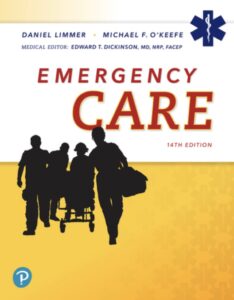Questions? Live Chat or Call (800) 728-0209
EMT Program Requirements
You can register for the course, by Clicking Here. Please complete the Program Packet to assist you with meeting the requirements prior to class and beginning externships.
How to become an EMT
One of the things that often gets overlooked when talking about EMS is just how much impact we have in saving people’s lives. In 2021 alone, over 240 Million 911 calls were made. 62.6% of which were made because of a medical emergency. From household injuries, all the way to car accidents, choking, and house fires, Emergency Medical Technicians play a huge role in helping people of all ages get the immediate, and oftentimes life-saving medical attention at that critical moment.
Which as you can imagine, makes becoming an EMT an incredibly rewarding career.
Our classes at EMSU will teach you all the skills you need to become a certified EMT and make life-saving decisions with confidence. Let us help you get started on this fulfilling career!
Questions? Live Chat or Call (800) 728-0209
EMT Class Details | Description
The EMS University, LLC EMT Course consists of a total of 148 hours. Specifically, this is a total of 120 hours of classroom instruction which includes 8 hours of skills testing. Additionally, 8 hours of practical examination assistance and 20 hours of clinical/externship rotations are required. This course follows National EMS Education Standards for the Emergency Medical Technician, the National EMS Education Standards as well as meet Arizona Department of Health Services, Bureau of EMS education standards.
Emergency Medical Technician (EMT) Course Textbook

Course Textbook: Emergency Care (14th Edition) / Pearson Education
Subjects Covered in the EMT Course
| Course Introduction and Overview | Emergency Medical Care Systems, Research and Public Health | Workforce Safety and Wellness of the EMT | Medical, Legal, and Ethical Issues |
| Documentation | Communication | Lifting and Moving Patients | Lab: Lifting and Moving Patients |
| Anatomy, Physiology, and Medical Terminology | Pathophysiology | Life Span Development | Airway Management, Artificial Ventilation, and Oxygenation |
| Baseline Vital Signs, Monitoring Devices, and History Taking | Scene Size-Up | Patient Assessment | Pharmacology and Medication Administration |
| Shock and Resuscitation | Respiratory Emergencies | Cardiovascular Emergencies | Altered Mental Status, Stroke, and Headache |
| Seizures and Syncope | Acute Diabetic Emergencies | Anaphylactic Reactions | Toxicologic Emergencies |
| Abdominal, Gynecologic, Genitourinary and Renal Emergencies | Environmental Emergencies | Submersion Incidents: Drowning and Diving Emergencies | Behavioral Emergencies |
| Trauma Overview: The Trauma Patient and the Trauma System | Bleeding and Soft Tissue Trauma | Burns | Musculoskeletal Trauma |
| Head Trauma | Spinal Column and Spinal Cord Trauma | Eye, Face, and Neck Trauma | Chest Trauma |
| Abdominal and Genitourinary Trauma | Multisystem Trauma and Trauma in Special Patient Populations | Obstetrics and Care of the Newborn | Pediatrics |
| Geriatrics | Patients with Special Challenges | Ambulance Operations and Air Medical Response | Gaining Access and Patient Extrication |
| Hazardous Materials | Multiple Casualty Incidents and Incident Management | Response to Terrorism Involving Weapons of Mass Destruction |
